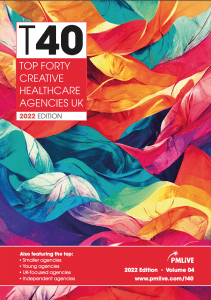Who is attending this meeting?
May 9, 2019 | Attention, Meetings etiquette, Who is attending this meeting?, meetings, presentations, smartphones
When you give a presentation, is your audience focusing on you, your slides, or their smartphones?
“No screens at the table. Put them away or I’ll send you to your rooms.”
That’s the losing battle cry of every parent who’s desperate to tear their family’s attention away from Snapchat, Fortnite and work emails, so they can all spend some quality time together, whether they like it or not.
It’s also the unspoken wish of anyone who has to host a business meeting today. A meeting used to be a sanctuary where the door was closed on the outside world, allowing everyone to focus their attention on the agenda and each other. Now, everybody brings their mobile, tablet or laptop to meetings, and divides their time between what the speaker is saying and what the world is feeding to their screen.
There is nothing more dispiriting for a presenter than an audience that appears to be ignoring you. Especially if you have been working on your presentation, proposal or pitch every day and night for the past 2 weeks. The first rule of presenting is “Command the room”. The second rule is “Ensure you have the audience’s full attention, by maintaining eye contact and reading their body language”. But you need a lot of presence to out-shout the infosphere. And a screenful of Powerpoint graphics will never compete with the internet.
Thanks to digital technology, we all live in a state of ‘continuous partial attention’. Everyone is distracted, all of the time. Scan the people in a coffee bar or pub, which are hubs of social interaction, and you’ll see that half of them are ignoring each other and looking at their mobiles. It has become socially acceptable to put your smartphone ahead of your friends. In people’s homes, the TV is no longer a magnet that draws the eyes of everyone in the room. It’s just one of many screens they can choose from, and the one in their hands has built-in features designed to keep them addicted.
That’s because we are living in the ‘attention economy’, with thousands of channels competing for people’s eyeballs, and concentration is the currency (it’s no accident that the expression is to ‘pay attention’). So how can a mere presenter make an impression?
Some speakers stand without saying a word until everyone in the audience is looking at them. It’s a classic teacher’s technique for claiming the classroom. In a world filled with noise, silence is a powerful way to gain attention.
Some ad agencies use guerrilla tactics to gain attention. In the pre-computer age, Peter Marsh and Rod Allen (from Allen Brady & Marsh, one of the leading UK ad agencies) used to play the piano and sing to clients during pitches. More recently, agencies have fought fire with fire, using immersive technology or experiential techniques to engage their audience.
A few client companies have a meetings etiquette that includes banning mobile devices, enforcing a temporary digital detox. But it would take a brave outsider to insist that everyone checks their devices at the meeting room door, or turns them off when the meeting starts. In an always-on, constantly connected world, that would be like switching off a life support machine, or depriving people of one of their senses.
Is it rudeness for attendees to gravitate to their devices during meetings? No, it’s just the way of the world. Sometimes people are checking for urgent emails. Sometimes they are communicating with each other – often feeding back on the presentation or the presenter. They could be checking out the presenter’s company website, or their LinkedIn profile. Occasionally they are fact-checking the content of the presentation. (It can be disconcerting when someone challenges your stats following an instant online search). Far from tuning out of the meeting, they may be scrutinising what you are saying more closely than ever.
So don’t assume your audience isn’t interested in you and what you’re saying. Everyone is so busy today, multitasking is essential, and this requires multichannel access. You are just one of the channels.
Should we make a stand against diversionary technology and insist that the audience switch off their devices when they come into a meeting? Good luck with that. As a way of gaining respect, that’s as effective as a parent sending their child to bed, where they can look at their device without interruption. However, it’s not unreasonable to expect that attendees are mentally as well as physically present at meetings (the archaic meaning of ‘attend’ is ‘to pay attention’). We put a huge amount of time and effort into presentations, amounting to thousands of pounds of work which is usually offered free to the audience, so that ought to be worth an hour or so of their undivided time.
Should an invited speaker have to resort to gimmicks to gain the attention of the people who invited them in? Not necessarily. But you have to accept that you’re competing for eye time, so what you say has to be at least as interesting as anything on their screen. Through compelling content, or the force of your personality, you have to be so damned interesting, they cannot tear their eyes away from the presentation or the presenter.
And agencies need to realise that they are in the entertainment business as well as the communication business. You don’t have to wheel in a piano to every meeting, but you need to grab your audience and keep them hooked. This ought to be second nature for ad agencies. Our campaigns have to fight for the attention of the target audience, so we might as well start with the client who is making the decision.
©2018 Life Healthcare Communications
http://www.life-healthcare.com/life-blog/who_is_attending_this_meeting/
This content was provided by Life Healthcare Communications





